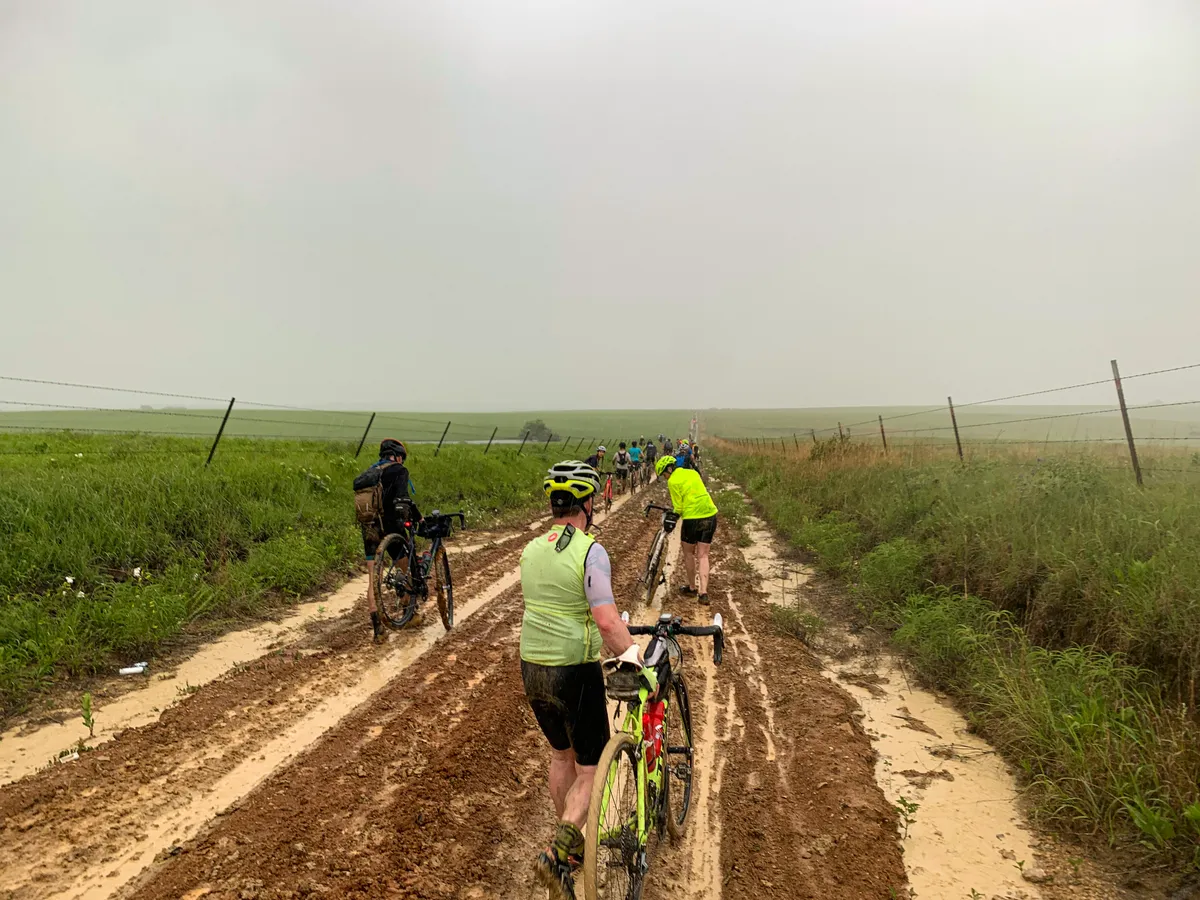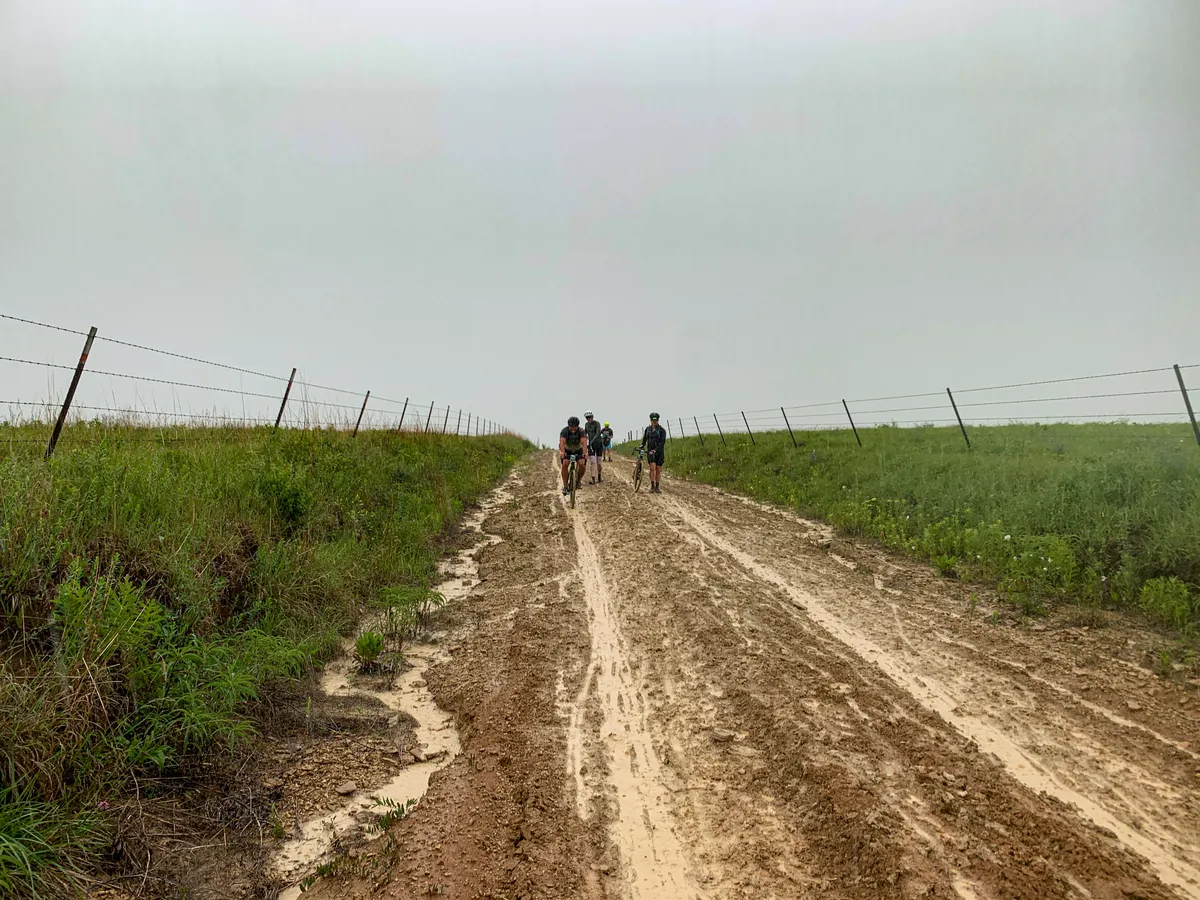Prior to this year’s event, I’ve toed the start line at Unbound Gravel eight times and claimed five finishes, including year one way back in 2006. At the time, none of us had a clue what we were getting ourselves into or how popular gravel would become.
Gravel riding has evolved at a breakneck pace, and I’ve never raced the same bike twice at Unbound. I’ve finished the Unbound 200 aboard a Surly Cross-Check in 2006, an early prototype of the first Salsa Warbird in 2012, a Specialized CruX in 2016, the Specialized Diverge in 2017, and the fourth generation of the Salsa Warbird in 2018.
This year, I decided to switch things up and try the 100-mile version of Unbound. The shorter event makes logistics, nutrition, hydration and gear choices much more straightforward, and, in my very undertrained case, I can fake fitness for 100 miles.
Even so, I decided to make some component choices that are arguably better suited to the 200- or 350-mile Unbound categories, but would hopefully help me finish strong.
Josh Patterson’s 2022 Unbound 100 gravel race bike
The Horse: A Niner RLT 9 RDO outfitted with a SRAM 'mullet' 1x12 drivetrain, Fox 32 Taper-Cast suspension fork, Ergon CF Allroad Pro Carbon flex seatpost and other gravel-centric components
Complete bike weight: 20.5lb / 9.3kg
The Course: The Unbound 100 race course. The Flint Hills region of Kansas features rolling hills, open grasslands and rugged gravel roads lined with razor-sharp rocks that can make quick work of fragile tyres. This year’s route was 104.8 miles / 168km in length with 4,300 feet / 1,310 metres of elevation gain
Weeks of heavy rain leading up to race day made many athletes, myself included, modify our gear choices and our expectations
The Goal: To finish the Unbound 100 feeling much fresher than my 200-mile attempts, free from mechanicals
Go with what you know
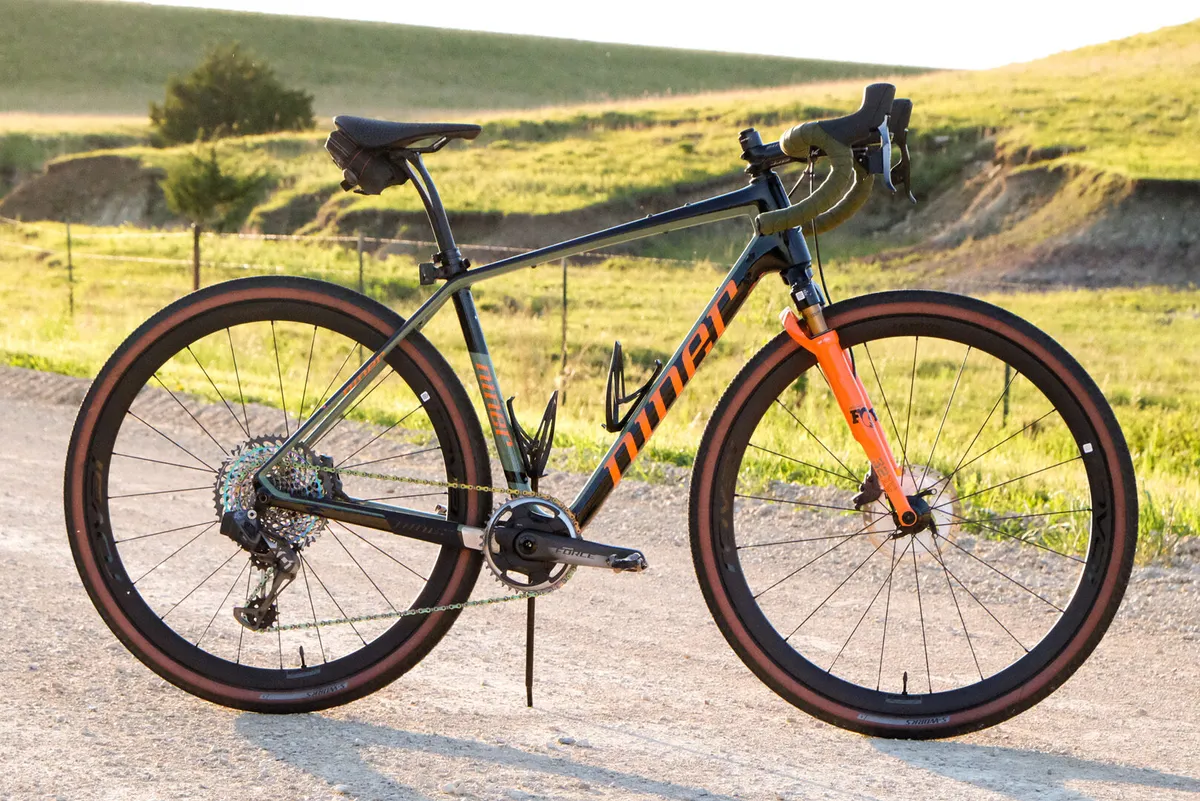
In years past, I’ve attempted to call in the latest, most newsworthy bike to race and review during Unbound.
This year, I decided to keep things simple and reduce my level of pre-race uncertainty by sticking with a bike I know well – my personal RLT 9 RDO.
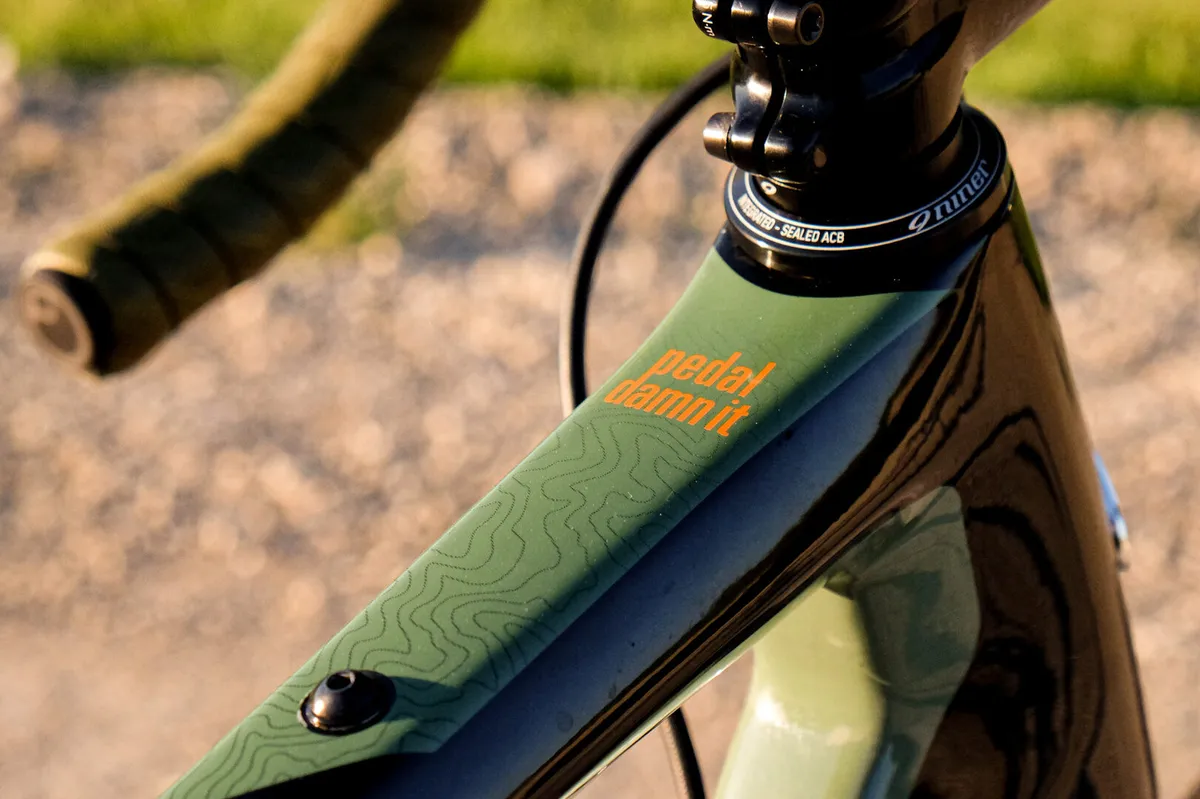
In my opinion, the Niner RLT 9 RDO is one of the best gravel bikes on the market. The handling is predictable without feeling cumbersome and the ride quality is excellent.
The RLT 9 RDO’s frame has all the requisite bottle mounts, as well as top tube mounts for a bolt-on feed bag and bosses on the carbon fork legs to carry additional cargo. These features make it a great bike for riders who want one rig for gravel racing and bikepacking adventures.
Suspension for the win mid-pack finish
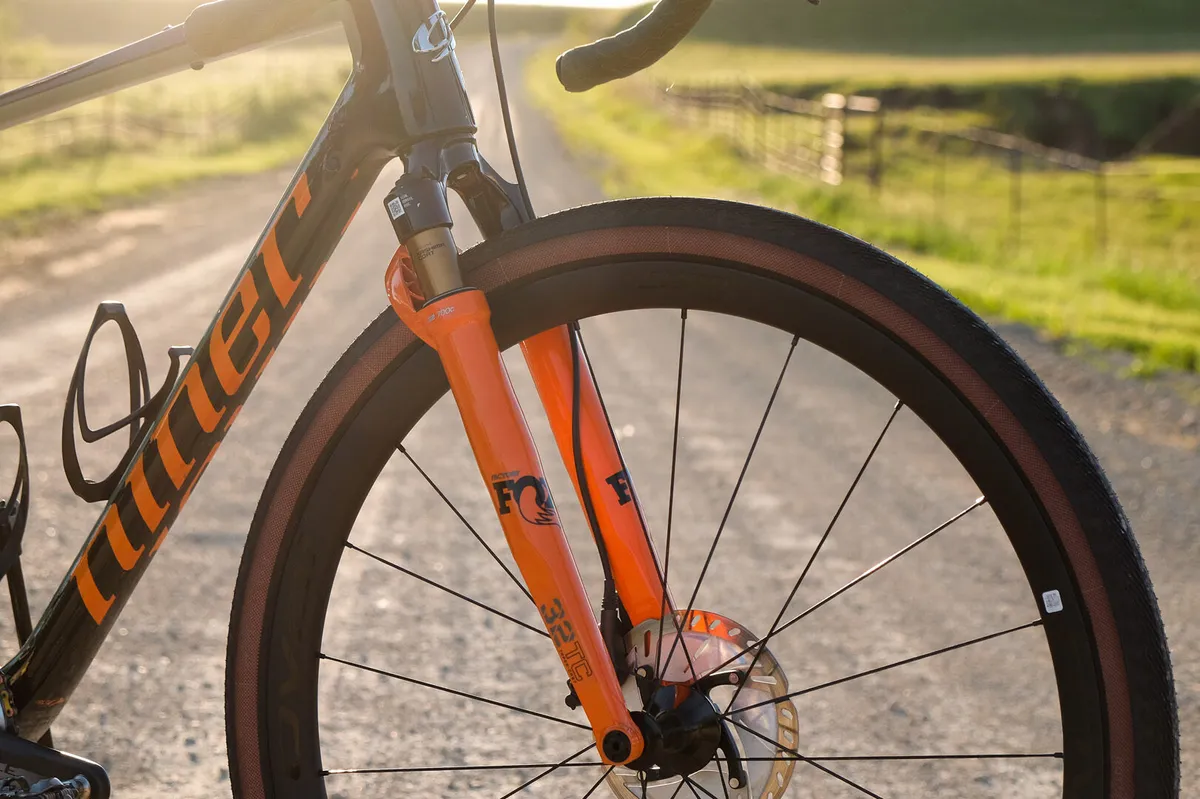
I’ve long believed suspension will play a role in the future of gravel bikes. Gravel suspension can take the form of engineered compliance in the frameset, similar to flex stays or Trek’s IsoSpeed system; flex stems and seatposts, like those offered by Redshift and Cane Creek; integrated suspension systems, such as Specialized’s FutureShock and BMC’s HiRide; and suspension forks, including the MRP Baxter, RockShox Rudy and Fox 32 Taper-Cast.
I opted to mount the Fox 32 Taper-Cast to my Niner. Would 40mm of suspension make a difference? Would it be worth the 660g weight penalty over the stock carbon fork? I wasn’t sure, but I was curious to try it out.
My best finishes at Unbound were on bikes with some form of suspension – the FutureShock-equipped Diverge and a Warbird with Redshift’s ShockStop stem. In both cases, the small amount of suspension reduced hand and shoulder fatigue, allowing me to spend more time in the drops. I was willing to try my luck with a proper gravel suspension fork this year.
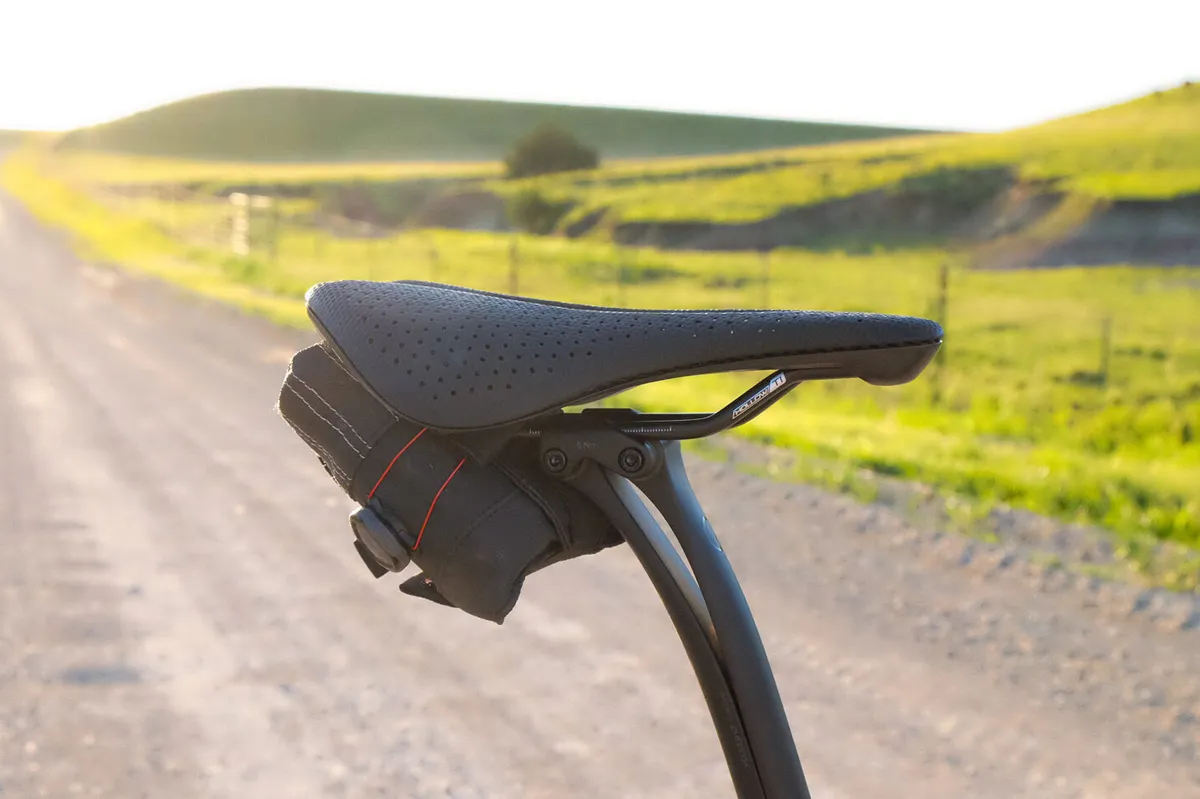
I deduced that since I planned to run a suspension fork, I was likely to spend more time seated when traversing rough terrain than I would with a rigid carbon fork. So, I replaced my standard carbon seatpost with Ergon’s CF Allroad Pro flex post.
This seatpost functions like a carbon leaf-spring and provides up to 20mm of flex. I also wrapped my handlebar in Ergon’s new 3.5mm-thick BT Gravel handlebar tape for an additional layer of cushioning.
I had finalised my bike setup, and then the forecast started looking wet. Really wet.
Plan for the worst and hope for the best
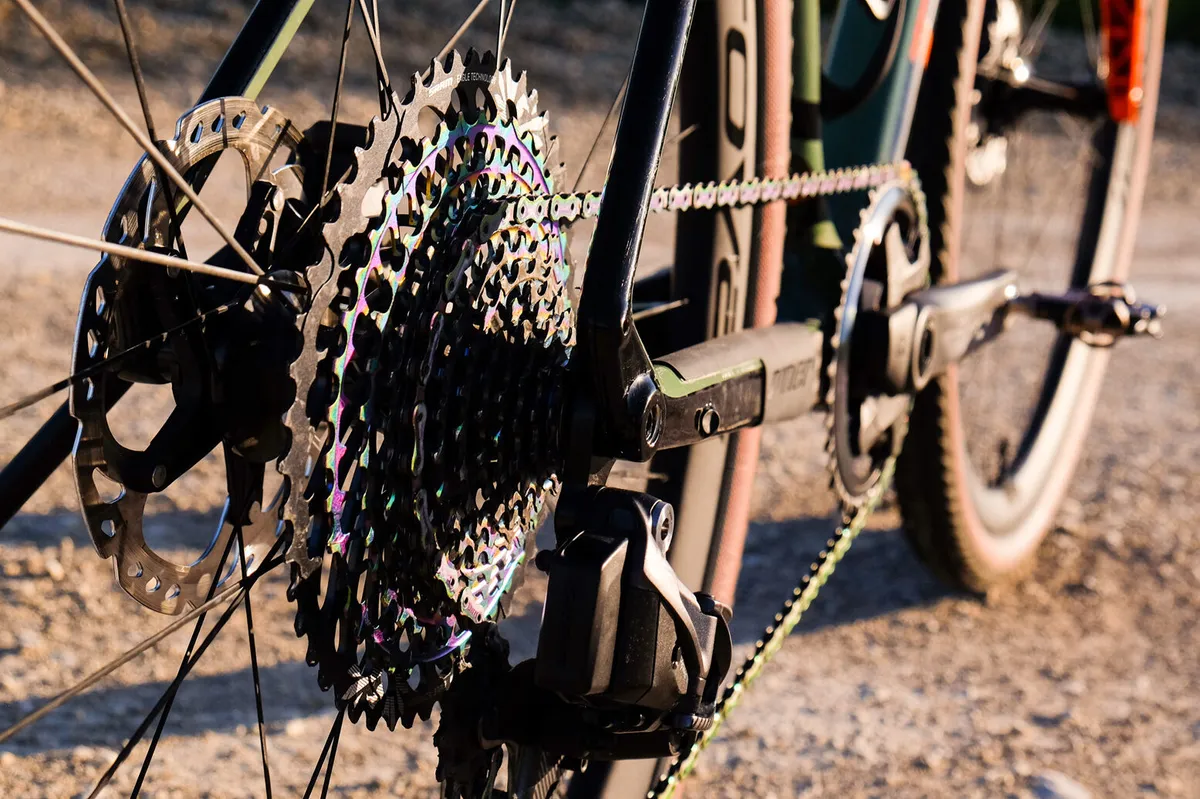
I grew up in the Flint Hills of Kansas and know that these roads can absorb a lot of water. Overall, most of the course drains well, but many of the notorious B-road sections of the route are more clay than gravel and will quickly turn into an unrideable quagmire when saturated.
After pondering the 10-day forecast, I decided to make some component changes to reduce the likelihood of mechanicals should the worst-case scenario unfold. First, I swapped my SRAM Force eTap AXS Wide 2x12 drivetrain for the simplicity and extra range of SRAM’s 1x12 mullet drivetrain.
In general, I prefer the smaller steps between gears of 2x drivetrains for gravel racing, but this mullet setup, with a 40t chainring and a 10-50t MTB cassette, would give me the range I needed to power through thick mud with a much lower chance of mechanical issues than a 2x drivetrain. Kudos to SRAM for offering such a wide range of 1x and 2x drivetrain options for gravel riders.
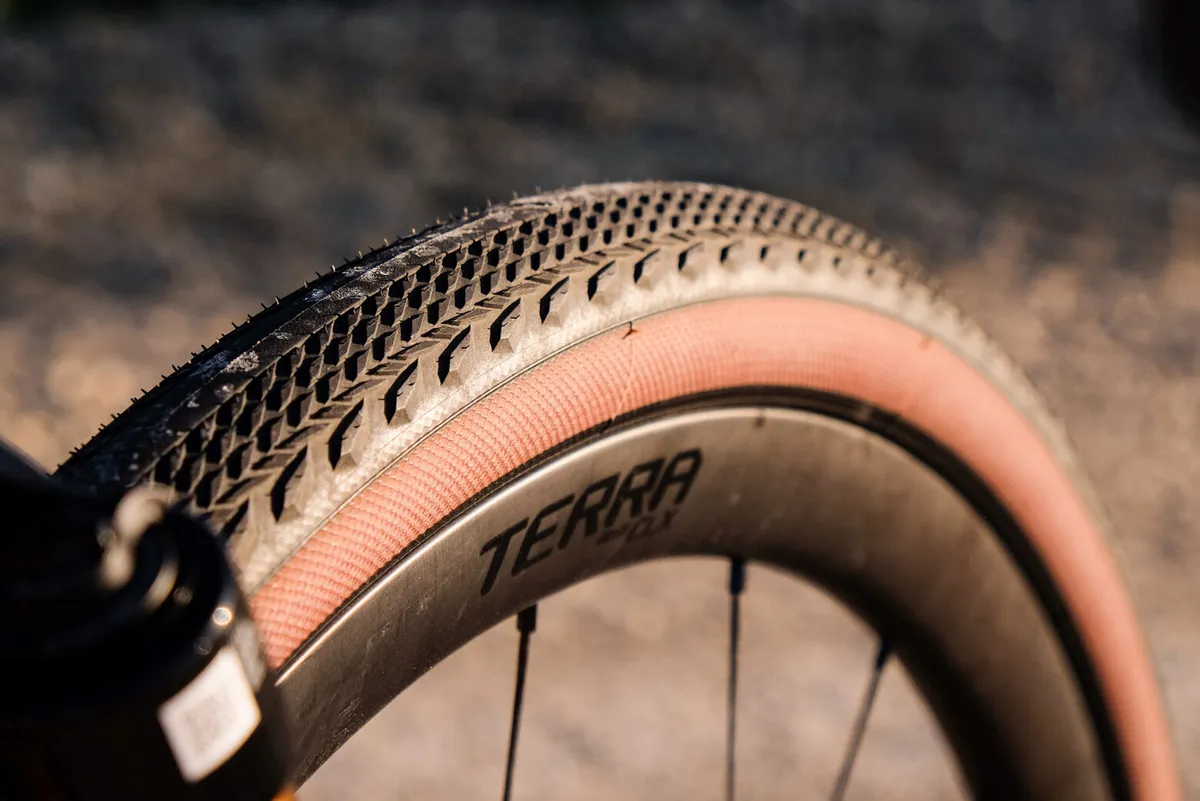
Once I had my drivetrain sorted, I started to rethink my tyre choice. I have a few go-to gravel tyres that I can count on to stand up to the flint-covered roads of central Kansas. My go-to tyres are Panaracer’s GravelKing SK Plus+, Vittoria’s Terreno Dry, Specialized's Pathfinder Pro and its new S-Works Pathfinders. However, while Pathfinders are a great dry-condition tyre, I wanted something with more bite in muddy conditions.
I opted to try the brand new Schwalbe G-One RS tyre. According to Schwalbe, this is the fastest gravel tyre in the company’s line, with a claimed 20 per cent less rolling resistance than the G-One R.
The fish-scale centre tread is similar to the Vittoria Terreno Dry. Schwalbe recommends running these tyres in opposing directions – the front tyre set with the edge knobs angled forward for cornering grip, and the rear tyre facing in the opposite direction to allow the scales to dig in and bite while climbing.
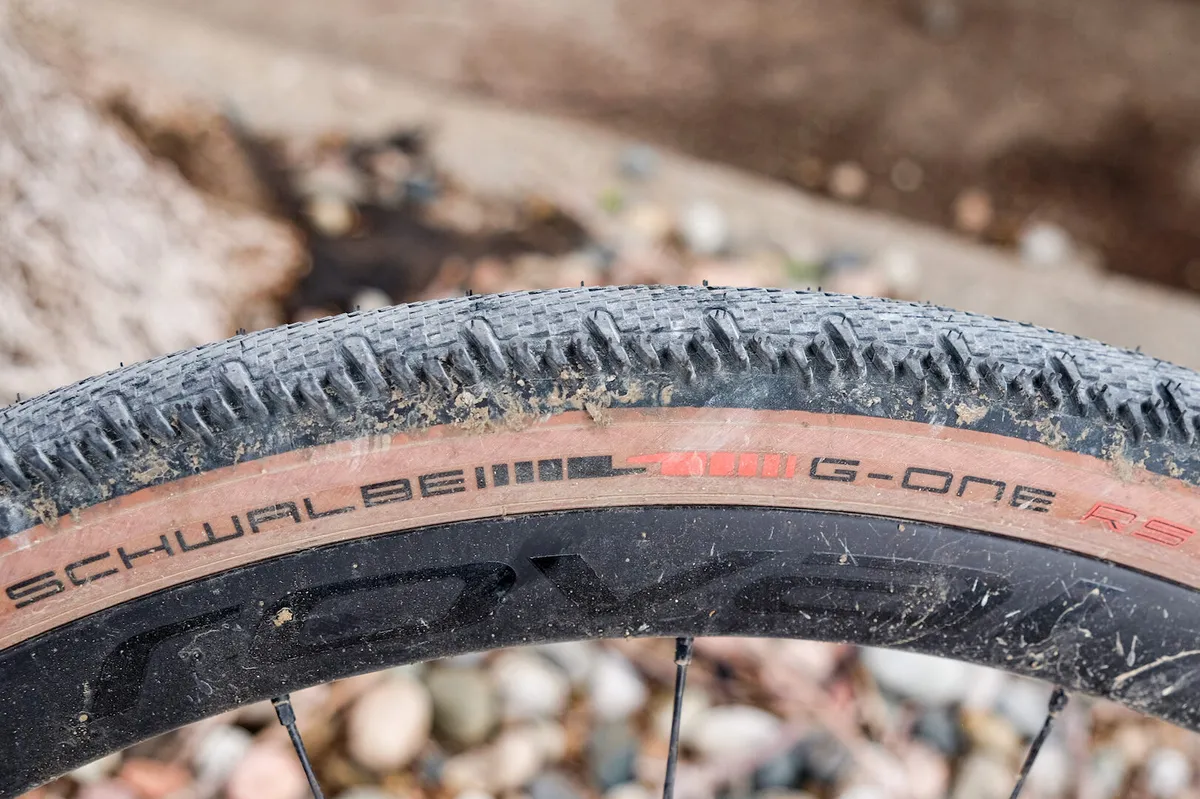
The 700x45mm G-One RS tyres plumped up nicely when mounted to my Roval Terra CLX wheelset. I ran 26psi up front and 28psi in the rear, which perfectly matched my 155lb (70kg) rider weight.
Unbound allows support from race crews at designated checkpoints along the course. Unbound 100 riders had one chance to refuel and resupply 66 miles into the 104-mile route. The 200-mile racers had checkpoints at mile 72 and mile 168. The 350-mile Unbound XL riders are responsible for themselves but able to stop at convenience stores along their route.
I planned to stop only to swap out water bottles and food before inclement weather became part of my calculus. I added fresh pairs of shoes, socks, gloves and a bottle of chain lube to my drop bag, along with food and water, just in case.
Accessories and other equipment
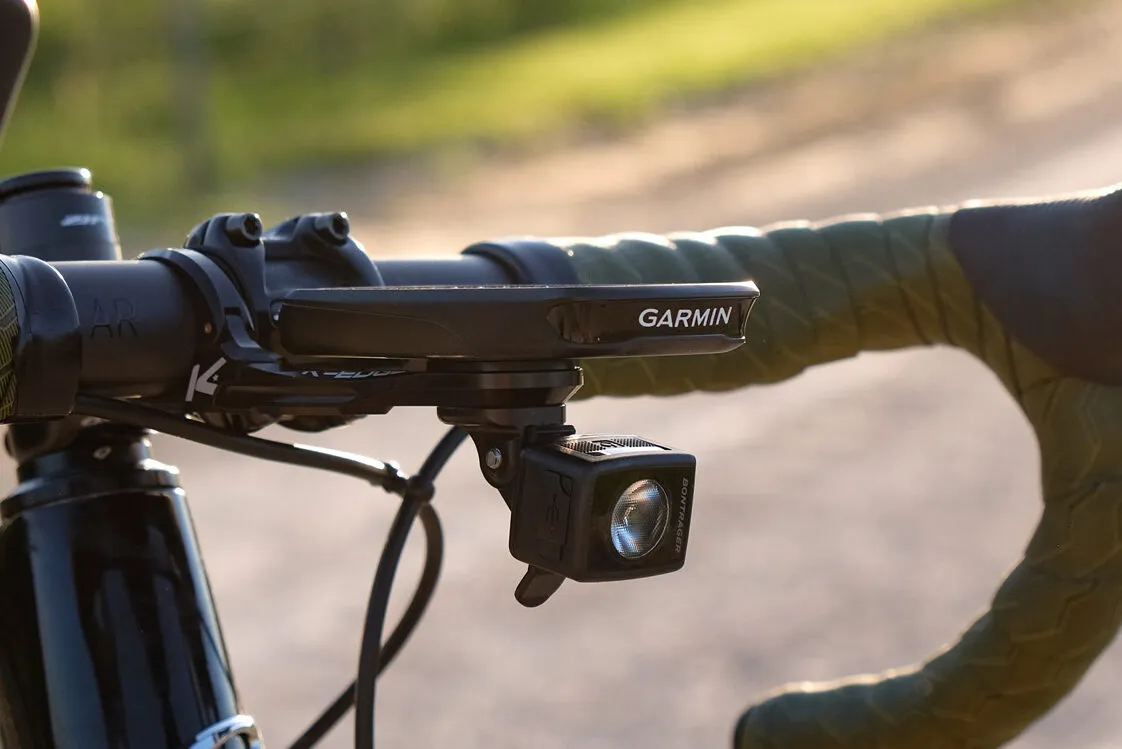
I’m not a minimalist, but I don’t take the kitchen sink with me, either. The repair kit housed inside my Bontrager Spring Roll consisted of two Tubolito gravel tubes, a tyre lever that can double as a mud scraper, a Dynaplug Air with spare tyre plugs and two CO2 canisters, and my trusty Crankbrothers M17 multi-tool.
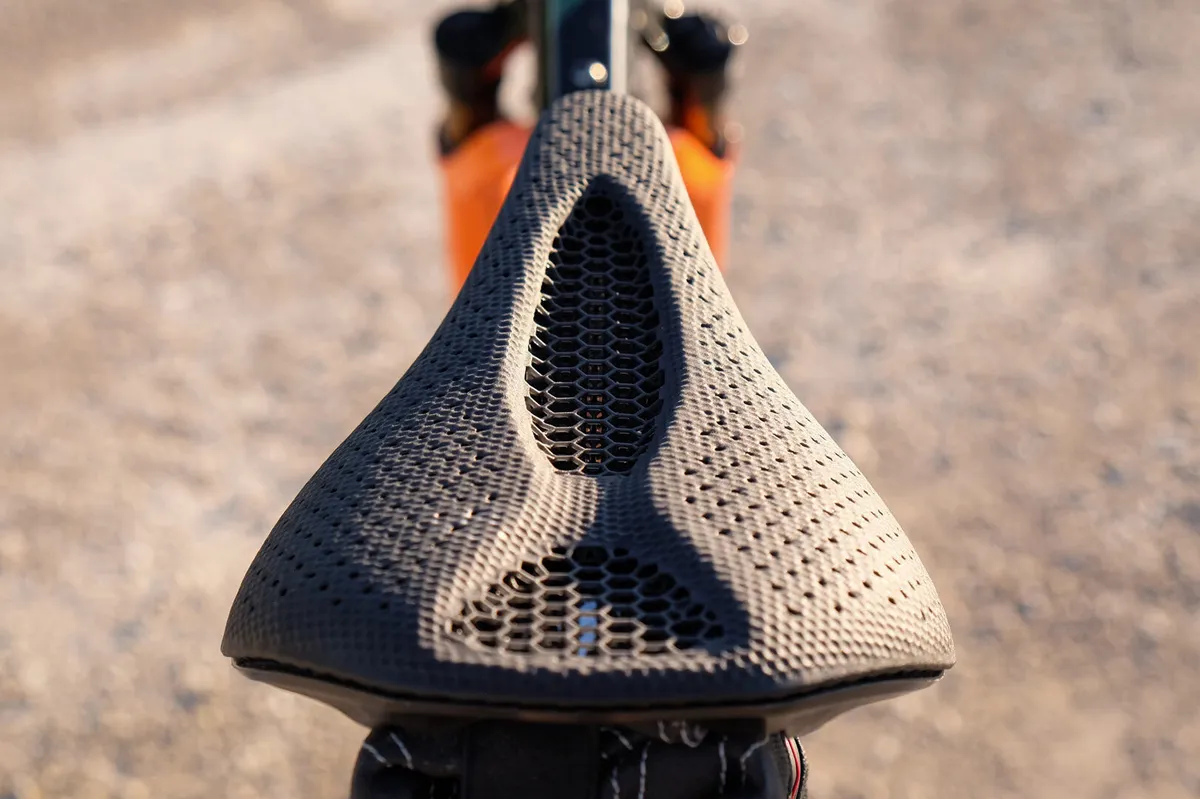
Unbound requires all racers to start and finish with front and rear lights, even if they’re likely to finish well before sunset. Bontrager’s Ion 200 RT/Flare RT was my preferred setup. I relied on Garmin’s Edge 1030 Plus for navigation.
One very important item I tried for the first time was the Specialized Power Pro Mirror saddle. This new saddle features 3D-printed cushioning. As a long-time Power saddle user, I was willing to give it a try since the fit is the same, but I was a bit hesitant about how it would perform in the mud.
And the heavens open…
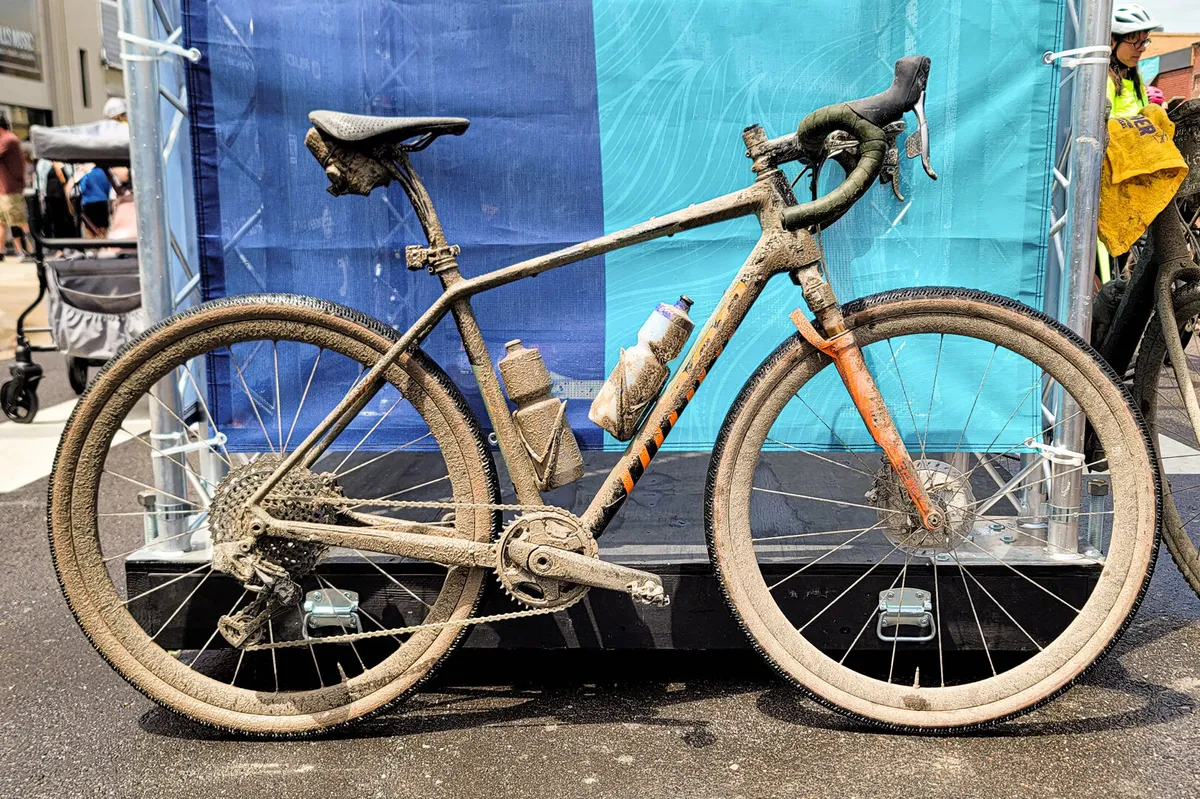
Four thousand gravel racers were eager to take on the course on Saturday morning. Once underway, overcast skies, mild temperatures and hard-packed gravel roads were the perfect ingredients for a blistering starting pace.
We had an hour of rain-free riding before intermittent showers began. The rain dried as quickly as it fell, though, keeping the roads in excellent condition.
I began to doubt my drivetrain swap – was it worth the time and effort? It would have been much easier to find my preferred cadence with a double and tightly spaced cassette, especially when riding in pace lines.
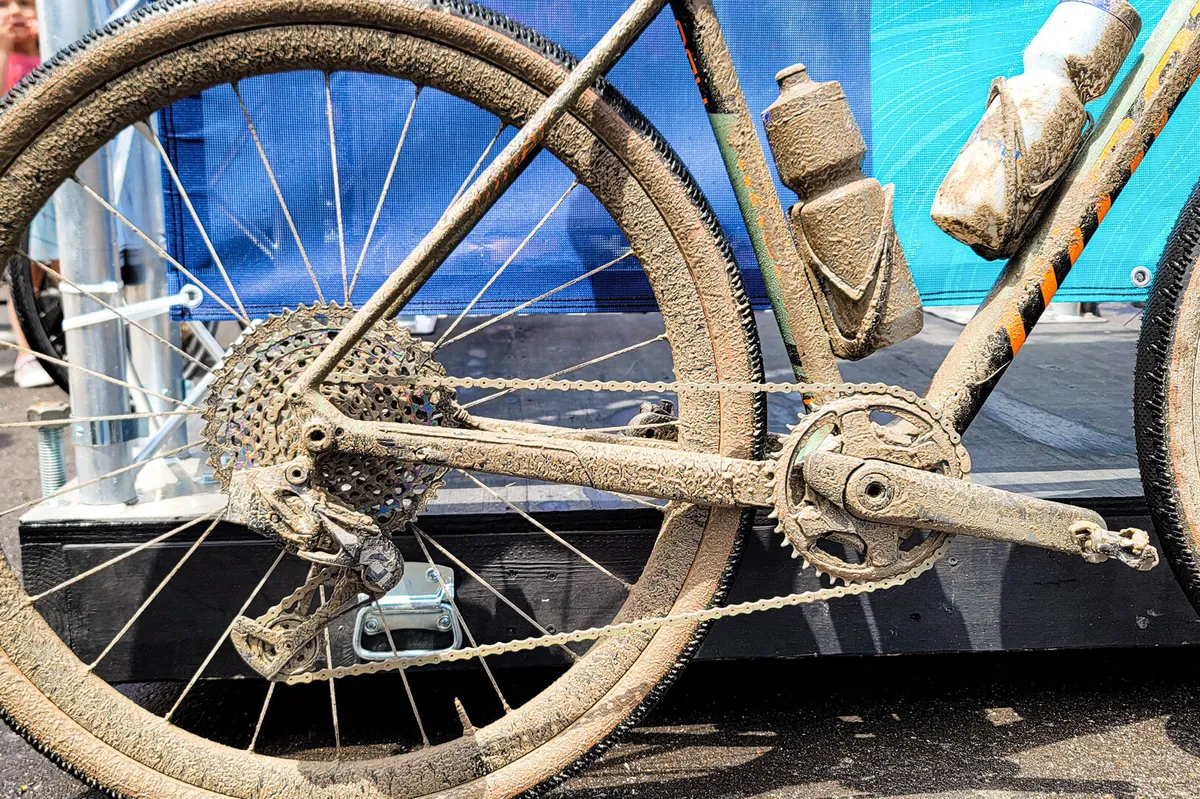
This second-guessing lasted until the checkpoint, at which time the skies opened up and the downpour started.
It wasn’t long until the B-road sections of the course became unrideable rivers. Riders carried mud-laden bikes, many with broken derailleurs (here’s a pro tip for any gravel racer: know how to convert your bike into a singlespeed and be prepared to do so).
I was lucky enough to make it through unscathed. SRAM’s mullet drivetrain performed flawlessly and the Fox 32 Taper-Cast fork allowed me to make up time on descents, improved my cornering confidence, and eliminated any hand and shoulder fatigue.
I finished free from mechanicals and, for the most part, was satisfied with my setup, though there were some things I would change if I could do it again…
The good
- SRAM’s 1x12 mullet drivetrain proved to be a bomb-proof option for this year’s Unbound race course
- The Fox 32 Taper-Cast fork was good but probably overkill for 100 miles of Unbound. I would strongly consider using it for the Unbound 200 and would absolutely use a suspension fork for the 350-mile version
- Schwalbe’s G-One RS tyres struck the ideal balance of speed and traction. In difficult conditions, these new tyres proved themselves by shedding mud well and shrugging off sharp flint
- Ergon’s cushy gravel handlebar tape and CF All Road Seatpost improved my comfort and will become staples on my gravel bike
The bad
- The Specialized Power Pro Mirror saddle quickly clogged with mud. Even in dry conditions, the textured surface grips your bib shorts, making it hard to shift around – this is especially noticeable in endurance events. I’ll be sticking to my tried and true Power Pro Elaston saddle for gravel events
- Touchscreens aren’t always the best choice. My Garmin Edge 1030 Plus kept me on course and on pace, and I finished with an impressive 18 hours of battery life remaining. Unfortunately, water, mud and sweat frequently caused the device to switch between screens at unexpected times
The muddy
- Allied’s Grax chain lube stood up to the worst Mother Nature threw at it. My drivetrain remained silent and shifted smoothly despite being caked in mud
- Pearl Izumi's Expedition Pro Bib Short is extremely comfortable and provided easy access to my gels
- The Pearl Izumi Pro Barrier Jacket fits like a jersey and kept me dry without overheating
What will I change for next year?
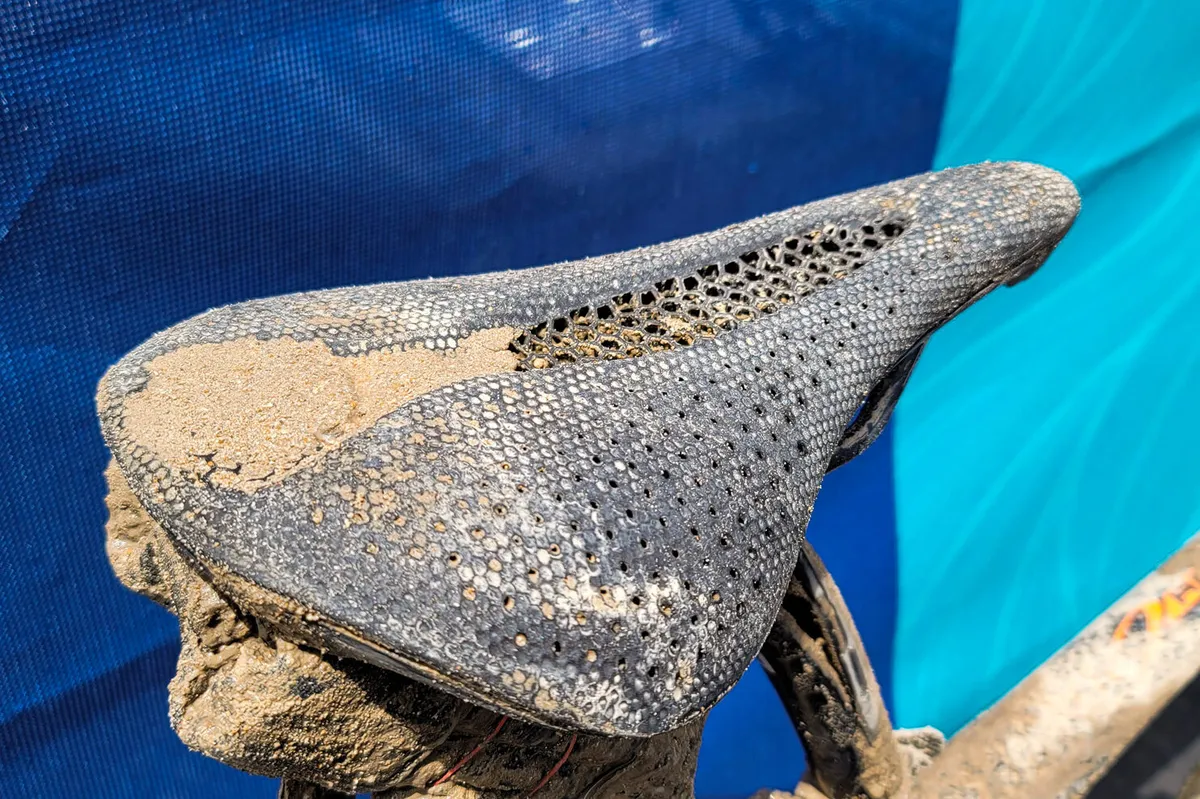
If I do the 100-mile version again, I may forgo the suspension fork in the name of weight savings, though I’d consider running it again for longer events.
I’ve had mixed luck with Schwalbe’s gravel tyres in the past, having shredded numerous pairs of G-Ones in the Flint Hills. The new G-One RS made me rethink my stance, and I’d run this tyre again without hesitation. I may opt for the narrower and lighter 40mm-wide version for less demanding courses.
As mentioned, the Pro Power Mirror saddle didn’t work well in the mud but might perform better as a dedicated road bike saddle. Last but not least, the most important upgrade I’ll make before next year’s race will be to my fitness.
